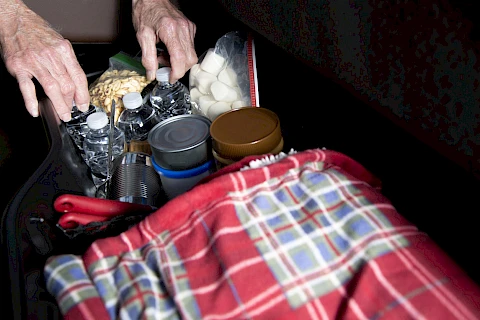
When the leaves start to change and the air turns crisp, you need to think about emergency preparedness, especially for seniors. Fall brings specific challenges like unpredictable weather and shorter daylight hours, making having a well-prepared emergency kit crucial. This article helps seniors and their caregivers put together a comprehensive fall emergency preparedness kit, ensuring safety and peace of mind.
Non-perishable Food
When assembling your emergency kit, start with non-perishable food. Choose items that are easy to prepare and have a long shelf life, such as canned soups, dried fruits, and crackers. You need to pay attention to portion sizes and dietary needs; for example, low-sodium or sugar-free options might be necessary for some.
Water Supply
Water should be part of any emergency kit. The general recommendation is to have at least one gallon of water per person per day to stay hydrated and aim for a three-day supply. Store the water in a cool, dark place, and regularly check for expiration dates.
Flashlights and Batteries
Power outages can be common during fall storms. Have multiple flashlights on hand, including battery-operated and hand-crank types. Don't forget to stock up on extra batteries, as they can run out quickly when needed most.
Backup Medications
Medications are crucial for seniors. Create a list of medications and ensure you have at least a week's supply in your emergency kit. Store them in a cool, dry place and label them clearly. Keep a copy of the prescriptions and dosage instructions with the medications.
First Aid Kit
A basic first aid kit is a must-have. Include items like bandages, antiseptic wipes, and pain relievers. Think about additional items that may be necessary for seniors, such as hearing aid batteries or specific medical supplies.
Warm Clothing and Blankets
Fall temperatures can drop quickly, so have warm clothing and blankets in your kit. Include items like sweaters, socks, and hats. Store them in an easily accessible place so you can get to them quickly if needed.
Storing Your Emergency Kit
The location of your emergency kit makes it easier to find. It should be easily accessible yet safe from environmental factors like moisture. Consider placing it in a closet near the main living area or by the front door for quick access. An organized kit makes it easier to find what you need in an emergency. Label and categorize items, using containers and bags to keep everything neat. For instance, medical supplies should be kept in one container and food items in another.
Checking and Updating Your Kit
Regularly checking your emergency kit ensures everything is in good working order. Aim to inspect the kit at least twice a year, once in the fall and once in the spring. Look for expired items, damaged packaging, or anything that may need replacing. As seasons change, so do your needs. Replace expired food and water, and switch out warm-weather clothing for items more suitable for fall. Keep your medication list up to date and ensure that all personal documents are current.
Senior Helpers High Point Helps Seniors Remain Prepared
Being prepared can significantly reduce stress during an emergency. Taking the time to create or update your fall emergency preparedness kit is a crucial step in ensuring your safety. If you need help or have questions, don't hesitate to contact Senior Helpers High Point. We proudly serve Asheboro, High Point, Pleasant Garden, and Trinity.